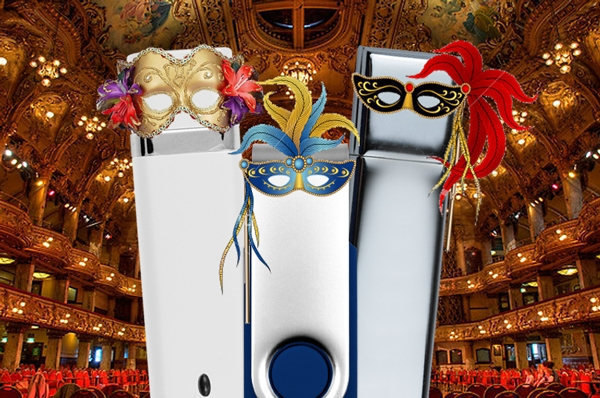What Is a Masked USB Flash Drive
Promotional USB flash drives are incredibly popular at the moment with lots of companies buying them to promote their brand, to support their sales activities or to hand out at seminars or conferences with presentations pre-loaded onto them.
As the market for promotional USB flash drives continues to grow it is starting to attract an increasing number of suppliers looking to cash in and make a quick buck. The challenge for the buyer of any promotional USB flash drive (and equally the opportunity for the scam merchants) is to be sure they are getting exactly what they are being quoted for.
If for example you place an order for 500 x 1GB USB flash drives printed with your company logo on both sides then its reasonable to expect that this is what will be supplied. The difficulty is that on the surface all flash drives, regardless of memory size look the same, a 1GB version looks just like a 16GB version so how do you check to make sure you’ve been supplied with what you’ve ordered?
A supplier that is selling masked flash drives (knowingly or unknowingly) will typically still describe them as Grade A flash drives (when they’re clearly not) and will put just as much effort into the overall look and feel of the drive. In other words when they arrive your printed USB Flash Drives are likely to look great, they might come with a lanyard and a giftbox and they might even be pre-loaded with data but a large part of what you’re paying for is the internal memory and NOT the appearance of the drive or any accessories.
It’s not as simple as just plugging the USB stick in and checking the “properties” of the flash drive on your PC. A “masked” flash drive will show up as a 1Gb or whatever size you’ve ordered, hence the expression “masked”
To check that you have not been duped and sold “masked” flash drives you should make the following checks when they arrive:
Let’s assume you’ve ordered 1GB USB drives then…..
- Connect the USB stick to your PC and wait for it to be allocated a drive letter.
- Transfer files (data) exceeding 900 MB (just below 1GB) to the USB drive – it might take a couple of minutes.
- When the data has transferred onto the flash drive then “safely remove the USB flash” drive from your PC
- Find another PC and connect the same flash drive to it and check to see if all of the files you loaded show up. If they don’t and say only 50% appear then you’ve been sold masked flash drives.
If your masked USB flash drives were purchased from a UK supplier then you should (assuming they are still in business) have recourse to them but if you’ve purchased then directly from the many “factories” now advertising on Alibaba and other such sites then it’s unlikely you’re get them replaced or get your money back.
Masked USB flash drives and suppliers purporting to sell Grade A flash drives when they are not are the scourge of the industry at the moment and unfortunately masked flash drives can only be identified upon delivery. Our advice is to buy locally (so you are protected under the local laws) and buy from a trusted supplier that operates from commercial premises and has been around for some time. Basic Google Earth checks (to see if they are selling from a garage or bedroom) coupled with company checks can normally rule out a good number of rogue suppliers.
As with many things in life it’s a case of buyer beware.

